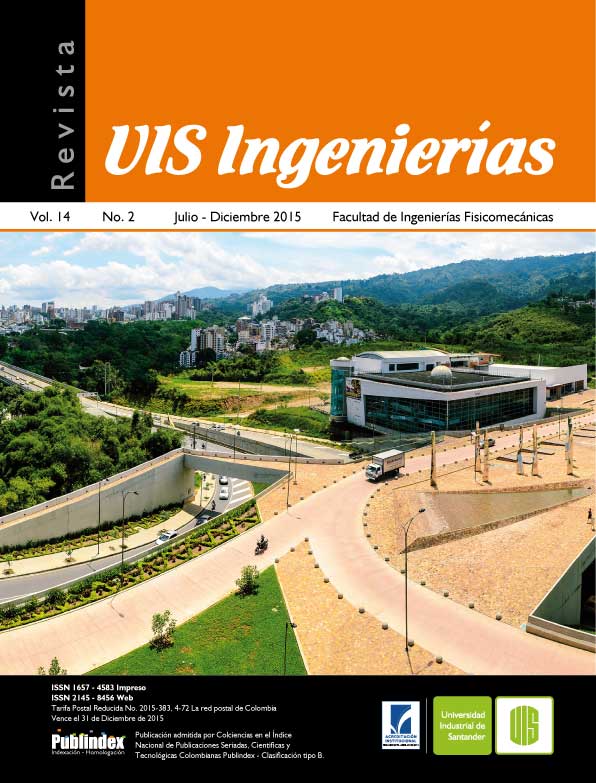Published 2015-07-09
Keywords
- Aluminum Welding,
- heat transfer,
- tool design,
- thermal simulation
How to Cite
Abstract
Friction Stir Welding is a process used for joining metals, mainly of low melting temperature, such as aluminum alloys. Studies involving the tool used in this welding process, focusing mainly on quantifying the effect of geometry on the final properties of the welded joint. In this paper it was studied the effect of the tool geometry in the heat dissipation, using computer simulation, specifically the module CFX of Ansys®14.5. They were considered three tool geometries, each built in a modular way with three parts: Collet Chuck, Shank and Implant. The virtual assembly was subjected to simulation models for the calculation of temperature and heating time. The models were evaluated, considering as welding parameters: Welding Speeds of 100, 150, 200 and 250 mm.min−1 and Rotation Speed of 700, 800, 900 and 1000 rpm. For the calculation it was assume that the temperature reached on the implant (Shoulder and Pin) were 500°C, in a welding time of 1 hour. The results allow to improve the tools design with a shorter shank and allows to confirm the effectiveness of using fins on the shank for greater heat dissipation, being more effective the use of Fins Displaced towards the insert in comparison with System with Fins on the Rod Center.
Downloads
References
- Colligan, K. J.; Konkol, P. J.; Fisher, J. J.; Pickens, J. R. Friction stir welding demonstrated for combat vehicle construction. Welding Journal, 82, 34–40, 2003.
- Dickerson, T.; Shercliff, H. R.; Schmidt, H. Heat flow into friction stir welding tools. En 4th international symposium on friction stir welding, Park City, Utah, USA (p. 16). volumen 14, 2003.
- Fehrenbacher, A.; Schmale, J. R.; Zinn, M. R.; Pfefferkorn, F. E. Measurement of tool-workpiece interface temperature distribution in friction stir welding. Journal of Manufacturing Science and Engineering,136, 021009, 2014.
- Fujii, H.; Cui, L.; Maeda, M.; Nogi, K. Effect of tool shape on mechanical properties and microstructure of friction stir welded aluminum alloys. Materials Science and Engineering: A, 419, 25–31, 2006.
- Hwang, Y.-M.; Kang, Z.-W.; Chiou, Y.-C.; Hsu, H.-H. Experimental study on temperature distributions within the workpiece during friction stir welding of aluminum alloys. International journal of machine tools & manufacture, 48, 778–787, 2008.
- Kuljanic, E. Amst’05 advanced manufacturing systems and technology: Proceedings of the seventh international conference. Chapter Low-Cost Transmation of a Conventional Milling Machine Into a Simple FWS Work Station. Springer Vienna, 2005.
- Mishra, R.; Ma, Z. Friction stir welding and processing. Materials Science and Engineering: R: Reports, 50, 1 – 78, 2005.
- Mishra, R.; Mahoney, M. Friction stir welding and processing. chapter 6, 2007.
- Nicholas, E.; Thomas, W. A review of friction processes for aerospace applications. International Journal of Materials and Product Technology, 13, 45–55, 1998.
- Thomas, W.; Nicholas, E.; Needham, J.; Murch, M.; Temple-Smith, P.; Dawes, C. Improvements relating to friction welding, 1993. WO Patent App. PCT/GB1992/002,203.
- Xu, W.; Liu, J.; Luan, G.; Dong, C. Temperature evolution, microstructure and mechanical properties of friction stir welded thick 2219-o aluminum alloy joints. Materials & Design, 30, 1886–1893, 2009.
- Xue, C.; Ren, X.; Zhang, Q. Heat production simulation and heat-force couple analysis of fsw pin. Engineering Review, 33, 85–91, 2013.

